Besides beautifying a garden, ornamental trees give a landscape its shape and form, and become a major attraction for many bees, butterflies and birds. Read this article to know all about ornamental trees for landscaping.
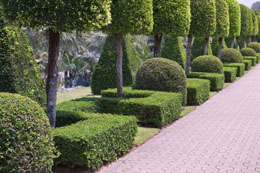
Planning for a landscape is like filling in the right colors to create a hypnotizing effect. Ask a landscape artist about the trees he/she would like to add to the landscape, and I am sure they would go on and on, as there are endless varieties to choose from, each with unique characteristics. So many different ornamental tree varieties, plus the various landscape designs, definitely make it difficult for most people to decide which one would be right for them. Here, you will find a few tips that will help you decide which ones to plant and how to go about it.
Trees that are often used in landscaping can be divided into three categories; shade, evergreen, and ornamental. The shade ones are planted for their large, spreading canopies that provide an ample amount of shade, evergreen are those that have leaves on them round the year, and ornamental trees are flowering or foliage color-changing trees, most of which are generally deciduous. A lot of them also qualify for all three classifications. The type you would want to plant also depends upon the location, and care and maintenance you can give it. Its pruning, fertilizing, and watering needs should also be well studied.
List of Trees
Flowering Crabapple
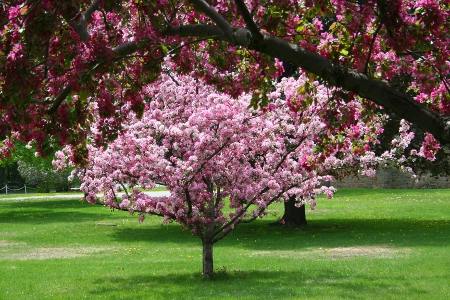
It grows around 20 feet high, and belongs to the deciduous family. It is one of the relatively small ones for landscaping. In spring, it bears scented flowers in colors of white, pink, or dark rose. Except for the common fungal infection, Apple scab, it stays relatively free from most pests.
Maple
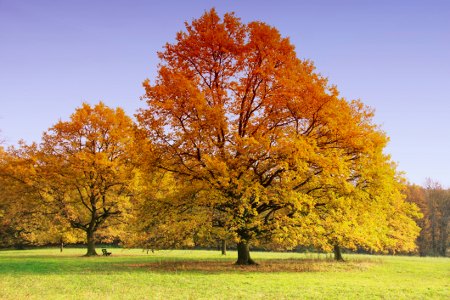
It is a deciduous shade tree that can attain a height of 50 to 60 feet. It is very popular, and can be easily identified because of its distinctly shaped and arranged leaves. Its fall colors include red, orange, or/and yellow hues. It bears small flowers in clusters and fruits.
Oak
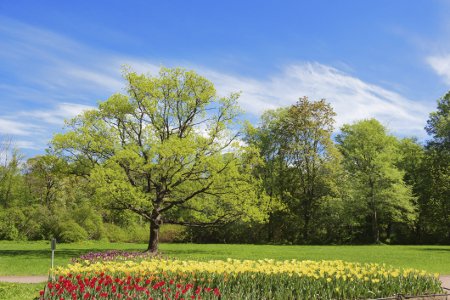
It is a large ornamental tree for shade, that grows nearly 80 feet high, with a crown spread of 3 to 4 feet. The leaves are simple and alternately arranged, 4 to 7 inches long, and have 7 to 10 rounded lobes. It bears yellow-green or reddish green flowers between the leaves and acorns.
Flowering Pear
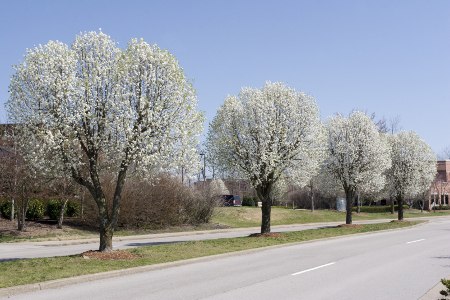
Pears are medium-sized trees; 20 to 40 feet high. Their barks are rough, and have growths that are upright with a natural oval shape towards the crown. Around mid April, pear sprouts white snowy flowers in large clusters that stay on the plant until the middle of the following month.
Dogwood

A favorite among many gardeners, this deciduous tree that grows up to a height of 30 feet and more, bears very showy flowers in colors of red, white, or pink that last for a fortnight. The foliage color looks dramatic when it changes from bright green to shades of red and purple. Shiny red fruits follow the foliage color change.
Birch
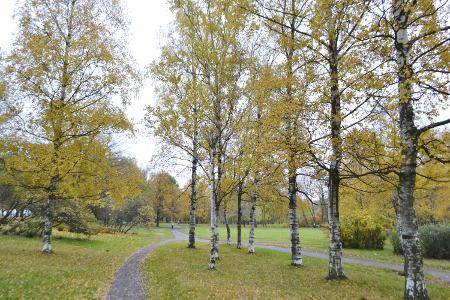
It has a distinctive, white, peeling bark with very delicate foliage. It grows nearly 40 feet tall and gives a drooping effect. The only problem area is its lifespan. Although it may live for nearly 50 years, it tends to decline by the time it is 20, sometimes even dying out.
Sweet Gum
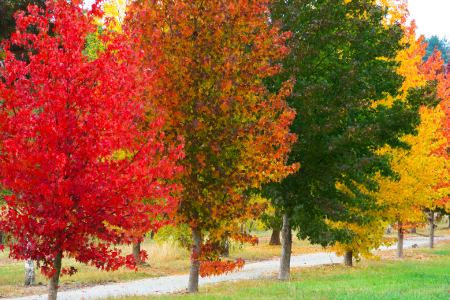
Native to southeastern United States, it is grown for shade and its vibrant fall color. It grows upright, reaching 80 to 150 feet in height, eventually developing an oval-shaped crown as it reaches maturity. In autumn, its foliage changes fall color; from bright yellow spotted with red, to a dark mottled purple.
There are many more varieties one can choose from. Most of them do not require heavy pruning once they are established. And once you plant one, you will have a friend for life!






 Planning for a landscape is like filling in the right colors to create a hypnotizing effect. Ask a landscape artist about the trees he/she would like to add to the landscape, and I am sure they would go on and on, as there are endless varieties to choose from, each with unique characteristics. So many different ornamental tree varieties, plus the various landscape designs, definitely make it difficult for most people to decide which one would be right for them. Here, you will find a few tips that will help you decide which ones to plant and how to go about it.
Planning for a landscape is like filling in the right colors to create a hypnotizing effect. Ask a landscape artist about the trees he/she would like to add to the landscape, and I am sure they would go on and on, as there are endless varieties to choose from, each with unique characteristics. So many different ornamental tree varieties, plus the various landscape designs, definitely make it difficult for most people to decide which one would be right for them. Here, you will find a few tips that will help you decide which ones to plant and how to go about it.





